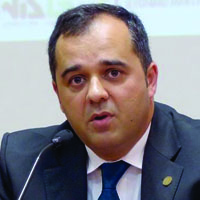João Carlos Correia Leitão

University of Beira Interior (UBI), Centre for Management Studies of Instituto Superior Técnico (CEG-IST) – University of Lisbon (ULisboa), Centre for Aerospace Science and Technologies C-MAST – UBI, Faculdade de Ciências Sociais e Humanas, Estrada do Sineiro, 6200 209 Covilhã, Portugal ([email protected])
Ph.D. in Economics by UBI where is Assistant Professor. Submitted his Habilitation on Engineering and Management, specializing in Technological Change and Entrepreneurship, in the Instituto Superior Técnico, at the ULisboa. He holds other specialization courses on: Entrepreneurship Education (Babson College, Boston), Negotiation (Anderson School of Management, University of California Los Angeles) and Public Management (Instituto Nacional de Administração). He is associate researcher at CEG-IST in ULisboa, and at C-MAST in UBI. He was external research fellow at the Max Planck Institute of Economics, Jena, Germany. His research interests include: entrepreneurship; innovation; organizational economics; and public policies.
Communication Abstract
Title: Open Innovation Bridge(s) between S&T and Firms
Abstract: As the firm is an open system, it is important to analyse internal firm-level factors that spur absorptive capacity, as well as the factors concerning resources and liaison flows used to absorb and communicate with external sources of knowledge, within a transactional structure rationale that needs further understanding in the context of open innovation business models. By mapping these factors, managers can design a more efficient open innovation business model in order to generate more innovation, at the firm level.
In the empirical application, following the Tangram model (Leitão, 2017), an analysis of firm-level resources and transactional elements is provided, by making use of a dataset of 571 service firms and 562 manufacturing firms which participated in the European Community Innovation Survey (CIS), 2010 (Eurostat, 2010). The results of a logistic regression analysis reveal that the resources represented by: acquisition of external knowledge and internal R&D activities; as well as the transactional elements, namely: cooperative liaison relationships with consultants and universities, plus external R&D activities; have a positive influence on the entrepreneurial innovation capacity, although they denote different ranges according to the subsamples under analysis, outlining the advanced development stage of the open innovation business models of service firms.
Keywords: Absorptive Capacity; Innovation; Tangram Model


 Português
Português